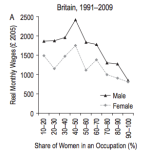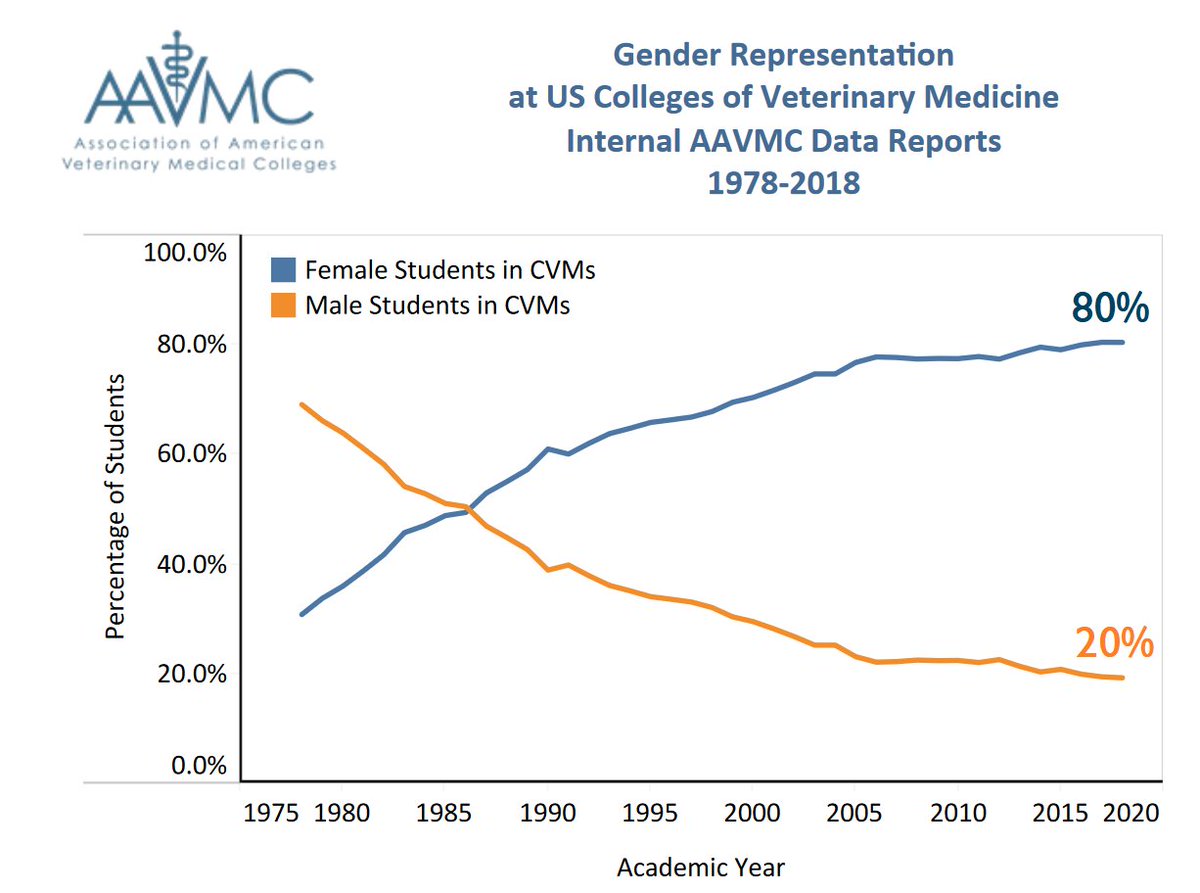The fact is that it is much harder to get into veterinary school than it is to get into medical school. But not less expensive.
Toni, are you sure that it's not the other way around? That it's much harder to get into medical school than into veterinary school?
Patriarchy’s Magic Trick: How Anything Perceived As Women’s Work Immediately Sheds Its Value | Crates and Ribbons which I discuss further in
#15 in my Google-dudebro thread. Also
#26 there. In a thread on impliciit gender bias, I posted in
#2 this:
Occupational Feminization and Pay: Assessing Causal Dynamics Using 1950–2000 U.S. Census Data | Social Forces | Oxford Academic online at
88.2.levanon.pdf
Occupations with a greater share of females pay less than those with a lower share, controlling for education and skill. This association is explained by two dominant views: devaluation and queuing. The former views the pay offered in an occupation to affect its female proportion, due to employers' preference for men—a gendered labor queue. The latter argues that the proportion of females in an occupation affects pay, owing to devaluation of work done by women. Only a few past studies used longitudinal data, which is needed to test the theories. We use fixed-effects models, thus controlling for stable characteristics of occupations, and U.S. Census data from 1950 through 2000. We find substantial evidence for the devaluation view, but only scant evidence for the queuing view.
Googling around, I found quite a lot of material about this, much of which I think fits into what is called
'gender devaluation theory'.
This paper, for example, seems to support the conclusions of the one you cited:
The feminization of occupations and change in wages: a panel analysis of Britain, Germany and Switzerland
https://www.econstor.eu/bitstream/10419/107004/1/817839763.pdf
Here is an illustrative graph for Britain, measured over a range of occupations:

Similar conclusions are reached in the paper below (which I cannot access in full):
UP THE DOWN STAIRCASE
Women's Upward Mobility and the Wage Penalty for Occupational Feminization, 1970-2007
https://academic.oup.com/sf/article-abstract/91/4/1183/2235777?redirectedFrom=PDF
This next paper introduces issues of race into devaluation theory, suggesting that it is relevant to both gender
and race:
MAN UP, MAN DOWN
Race-ethnicity and the Hierarchy of Men in Female-dominated Work
https://osf.io/preprints/socarxiv/74fhn/
The paper below on the other hand, claims that evidence for gender devaluation theory is scant and that differences can be explained by other theories (in particular gender role theory):
"Our findings are thus at odds with devaluation theory but consonant with sociological gender role theory which argues that men internalize a breadwinner role during adolescence to a higher degree than women which they then act upon when entering college and choosing their fields of study. Consequently, men disproportionately self-select into fields of study such as engineering which primarily provide economic resources and thus pay high wages, whereas women disproportionately self-select into fields like Philology and Pedagogy which are better compatible with the traditionally female identity derived from the housewife role where making money is much more peripheral than in the male breadwinner role. "
Why do women’s fields of study pay less?
(A test of devaluation, human capital, and gender role theory).
https://academic.oup.com/esr/article-abstract/30/4/536/2763463?redirectedFrom=fulltext
Among the interesting metaphors I came across were the
'glass elevator' which suggests that one advantage for men entering female-dominated professions is that they are more likely to be promoted to senior positions, on account of such roles being seen as 'more masculine'. Another was
'tipping point' which suggests that men will 'flee' (or be less likely to enter) professions as they become more feminized (have increasing proportions of women). This seems not dissimilar to the phenomenon of 'white flight' in the housing market, for which I imagine there is a version of devaluation theory also.
This paper also claims that gender devaluation theory does not seem to apply to prestige:
Gender, Occupational Prestige, and Wages: A Test of Devaluation Theory
http://www.diva-portal.org/smash/record.jsf?pid=diva2:184926&dswid=-8298
As far as I can see from googling around, there does seem to be general agreement on one thing, that such effects, whatever causes or caused them, are in decline, and that gender is playing a decreasing role in relation to discrepancies and inequalities in employment generally. If true, that would be the underlying upside, I guess.



